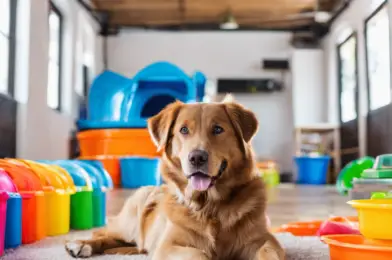If you’re passionate about dogs and considering starting a dog daycare business, you’re about to embark on a rewarding journey. But before you open your doors to furry friends, it’s crucial to understand the legal requirements that will ensure your venture is not only fun but also compliant with local regulations. One of the most important aspects of running a successful dog daycare is having the right licenses and insurance policies in place. These measures protect you, your business, and the dogs in your care. Let’s dive into what you need to know.
Every state and municipality has its own set of rules and regulations for operating a dog daycare. A business license is a standard prerequisite, often obtained from your local government office. This license authorizes your daycare to operate and ensures you comply with general business regulations. You’ll likely need to renew this license annually, ensuring ongoing compliance with the latest rules.
The licensing process might also involve a comprehensive inspection of your facility. This inspection typically covers various areas, including health and sanitation, fire safety, and structural integrity. For instance, you’ll need to demonstrate that your facility has adequate fire exits and meets local health standards for pet-related businesses. It’s crucial to consult with local authorities to understand the specific requirements for your area.
Insurance is another critical aspect of your dog daycare’s legal framework. General liability insurance is a must-have, protecting your business against claims of bodily injury or property damage. This coverage can shield you from significant financial losses in the event of accidents or unforeseen incidents involving dogs in your care. Imagine a scenario where a dog gets injured during playtime. With liability insurance, the medical expenses and potential legal fees could be covered, providing you with financial protection.
Additionally, consider investing in more specialized insurance policies. These might include pet care insurance, which covers expenses arising from accidents or illnesses of pets under your supervision, and worker’s compensation, which is essential if you have employees. This type of insurance safeguards your business against potential employee claims and provides coverage for work-related injuries or illnesses.
When it comes to insurance, it’s better to be over-prepared. Additional policies can cover specific risks, such as damage to your property, ensuring you can continue operations even after significant incidents. Remember, the right insurance package provides peace of mind, allowing you to focus on providing top-notch care for your canine clients.
Navigating the legal landscape of starting a dog daycare can seem daunting, but with the right research and advice, you’ll be well-prepared to open your doors. Always consult local authorities and legal professionals to ensure you’re following the correct procedures. With the necessary licenses and insurance policies in place, your dog daycare will be on the right track for success. Stay tuned for more insights into running a thriving dog-oriented business!




